When choosing a dog, whether it be from the shelter, rescue, or breeder, it’s best to know ahead of time what you’re looking for and what you’re NOT looking for. When you see a cute puppy and decide you’ll work out the kinks later and train the dog to be what you are hoping for, it’s not always possible. Some traits are ingrained in the breed of dog and cannot be “trained out.” Prey drive is an instinct in certain breeds of dogs. Some dogs have a very active prey drive, whereas others are calmer and less likely to go after your cats or children. We will take a look at some of the breeds of dogs with the highest prey drive in this article so you can have a better understanding of what the breed is and what you can expect from it.

What is Prey Drive?
Prey drive is defined as three different areas of focus for a dog: finding, locating, and collecting prey. It is a very strong instinct in many dog breeds. Herding and hunting dogs are naturally equipped with a high prey drive to be good for the job. As a canine, which is a descendant of wolves, all dogs have some level of prey drive since their ancestors needed it to survive. A wolf without a high prey drive wouldn’t last long in the wild. It is the way they seek out prey, hunt it, and capture it to survive.
As with any dog, never leave an unsupervised dog with small children. Any dog can go from a tail-wagging companion to a biter quickly. Children can help to keep this from happening by never climbing on top of a dog, taking their toys, or getting near their food. Another thing to watch out for is for anyone who tries to enter the dog’s kennel. A kennel is a safe place for a dog, and by entering it, the animal or child is trespassing. Dogs are naturally territorial, another character trait descendant from the wolf.
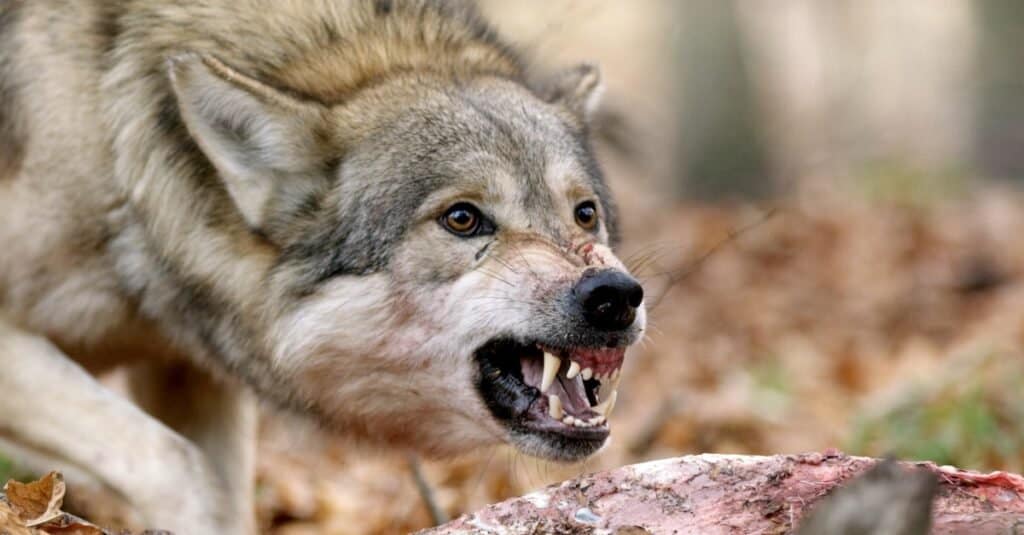
All dogs are descendants of wolves. Some have a strong prey drive as a result.
©Peter Ivanyi/Shutterstock.com
A high prey drive is not something that you can or should try to train out of your dog. It is an instinct and not something that can be turned off. Trying to seek out ways to let your dog harmlessly exercise their high prey drive while not causing stress for another animal. There are plenty of helpful ways listed online that are ready to be utilized. You do not want to end up with a dog labeled as “vicious” in your neighborhood.
Know What You Are Getting Into
If you choose to rescue a dog with a bad past, make sure you know what you are getting into and contact a dog trainer right away. Dangerous dogs are much harder to work with and will take a professional to help them manage their tendencies. Always do plenty of homework on the breed and dog itself before deciding to adopt. All dogs deserve a loving family to live with, but some will take a bit more effort to work with than others. Do not be one of the 4.5 million people attacked by a dog or the 50 killed yearly.
1. Australian Cattle Dog

The Australian cattle dog was bred for herding cattle, and that is not something that can be trained.
©LNbjors/Shutterstock.com
Australian cattle dogs are fantastic dogs as long as you know what to expect. These are high-strung working dogs that will become destructive if they are bored. To be happy and healthy, they need to have something to do. They aren’t aggressive unless you are a small animal or child that is herdable. It’s unlikely that they will be aggressive toward humans, but they may try to herd small children, and with herding comes nipping. Not exactly something you want if you have toddlers or small kids running around. If the dog is adopted as a puppy, they will grow up with the children and/or cats and may never try to herd them. Either way, the Australian cattle dog is always going to have a high prey drive and may become easily distracted by small animals on walks.
2. German Shepherd

German shepherds are considered the third most intelligent dog breed.
©iStock.com/diego_cervo
Most German shepherds are fantastic family dogs if they are properly trained. These guard dogs bond very closely with their owners and tend to be extra protective of children. German shepherds are very ferocious sounding and looking, which is great when you want your home protected from people looking for trouble. They are also fantastic to have on a walk, run, or hike because of their protective nature. This well-intended aggressiveness can turn for the worse in the wrong hands.
One flaw with German shepherds is their very high prey drive. Anything that runs from them is an easy target. They see chasing and catching prey as a game, and it is something they love. There’s a reason they make such excellent police and guard dogs. They will unleash that high prey drive on other people, kids, other animals, and especially cats if they are not raised together. It is best to adopt them as a puppy to be with kids or cats. Once a German shepherd can injure or kill another animal, it will have a taste for blood, and instinct takes over.
3. Pit Bull Terrier

It’s worth noting that Blue Nose Pitbulls often display territorial instincts and a protective demeanor.
©Diego Thomazini/Shutterstock.com
Pitbull terriers are on the receiving end of a lot of hatred amongst people who do not understand them or expect the dogs to act as non-high prey drive animals. It is an instinct to be territorial, protective, and always ready to chase small animals or children. Because of this, they have gotten a very bad reputation, which isn’t entirely deserved. They can make wonderful, lazy companions that snuggle better than anyone. They do best in households without children or cats. Strange smells and sounds set them off into a prey-driven frenzy because small animals often make strange noises, and they are extremely curious by nature.
In the wrong hands, pit bulls can be extremely dangerous fighting dogs who are capable of killing and may even enjoy doing so. There isn’t any dog who wants to be forced to fight. Dogs love food, companionship, and exercise. This dog is no different, and with the right people, pit bulls thrive and can make some of the best friends around.
4. Siberian Husky

Oftentimes,
Siberian
huskies can be hilarious companions who will always be ready for a walk.
©iStock.com/Elayne Massaini
Siberian Huskies are finicky, hilarious, vocal, working dogs who need to be kept active to keep them from destroying your home out of boredom. They come with a very active prey drive and will go after small animals, like cats. These dogs can be nippy and might not be the best choice for small children based on their rather rough style of play. They do make great dogs as long as you understand the breed and stay active with them. Siberian Huskies are generally very friendly with people and dogs. Chickens are not safe.
5. Greyhound

Greyhounds are bred for speed and love chasing small animals.
Greyhounds are fast and have a high prey drive. They are nice family dogs but do require a lot of playtime and exercise. Their vision is sharper than dogs with flatter faces, and they use it to move small, fast-moving animals, like your cat or rabbits grazing in the neighbor’s yard. They aren’t vicious or aggressive but can be difficult to walk if you’re in a place with lots of squirrels and rabbits or neighborhood cats. After all, that’s why the greyhounds run so fast in the races; there is a fake rabbit or squirrel that they chase.
6. Rottweiler
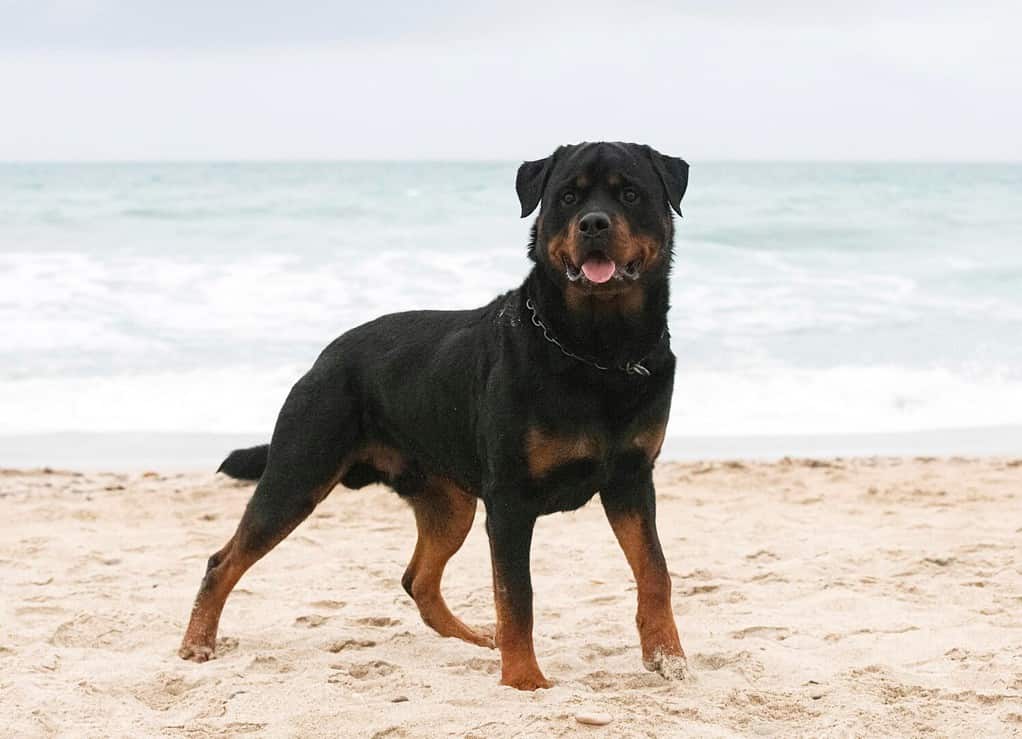
©cynoclub/Shutterstock.com
Rottweilers are very large dogs that many people are a bit nervous about. They will keep your yard and home safe, and they can be wonderful family dogs for a family with older children. They do have a high prey drive and will go after anything that runs. This includes small children and cats. They should always be supervised around small animals and children. They are prone to biting and being grouchy at times, and that is not something you would want children to fall victim to. Rottweilers are also very protective and territorial, which are excellent qualities in a guard dog. Due to their size and desire to chase anything that runs or makes high-pitched noises, they can pose challenges when walking.
7. Rhodesian Ridgeback
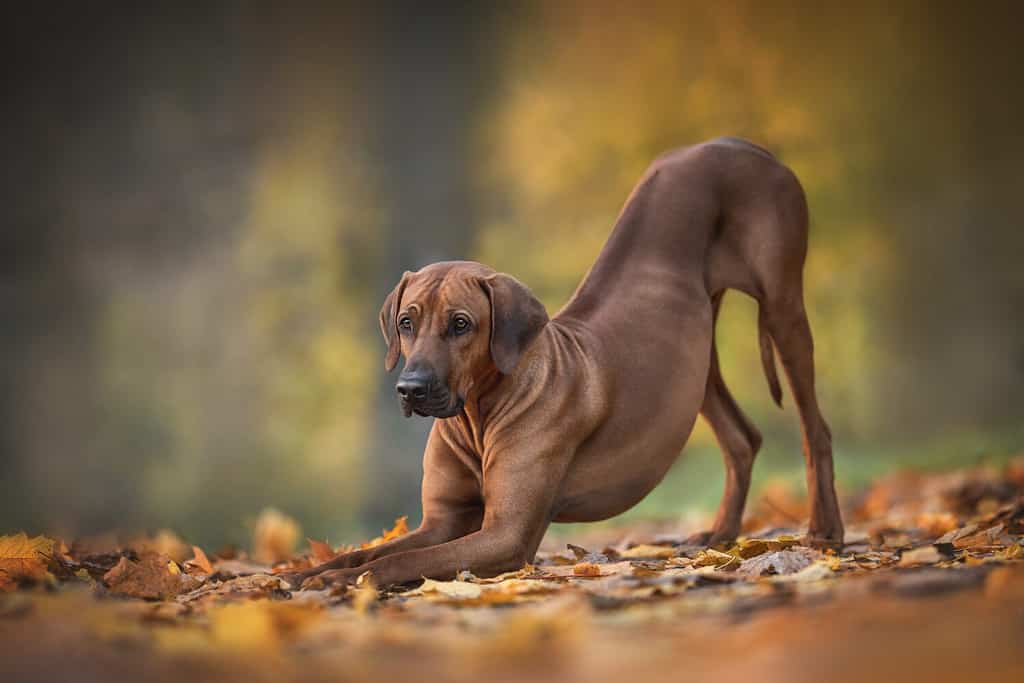
The Rhodesian ridgeback is very sleek and intelligent.
©Liudmila Bohush/Shutterstock.com
Rhodesian ridgebacks were bred originally to hunt lions. They can be very fierce and strong dogs, which may cause difficulties when walking or playing at the park. The dogs also have a high prey drive and see any small animal as an opportunity to hunt and chase. They are territorial, and children should never crawl on them or in their crates because they see that as their safe place to escape to when needed. They are good family dogs but do best in homes with older children and no small pets.
8. Border Collie
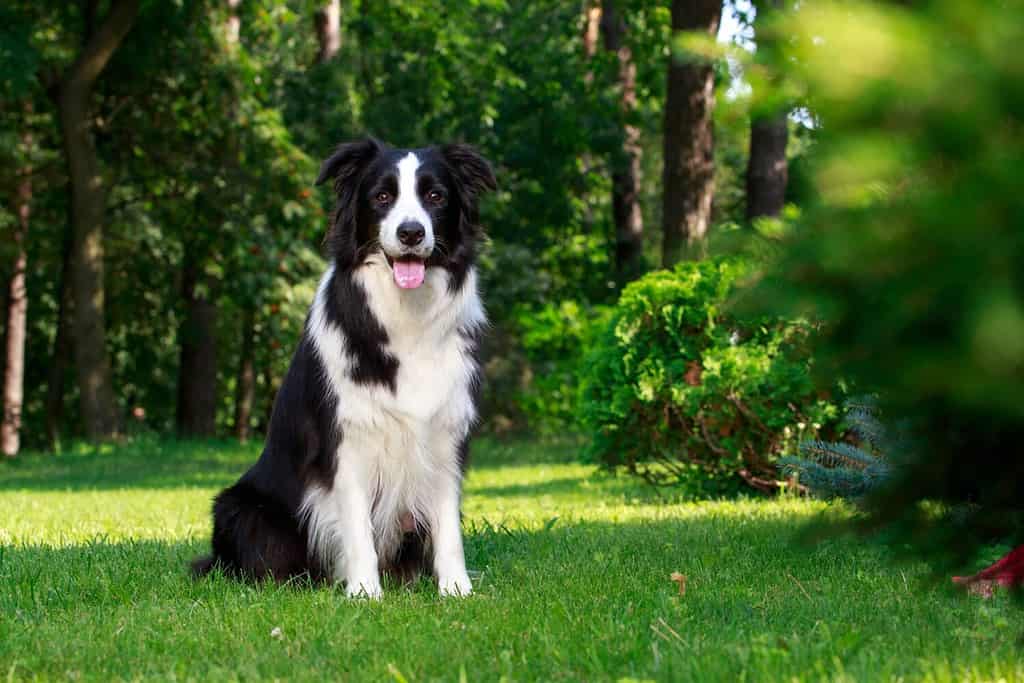
The
border collie
has deeply ingrained herding instincts.
©Olga Aniven/Shutterstock.com
Border collies are great dogs with a lot of energy and goofiness. They are not large but can herd cattle, sheep, and other animals, so they come with authority. They have an unbreakable focus that drives them to fixate on an animal or task until it’s completed. The dogs can be a bit neurotic and humorous. This is a breed of dog that needs a lot of exercise, play, and plenty of room to run. This is one reason they are typically found on farms. They are great guard dogs and are braver than their size should be. Because of the fixation and high prey drive, they can be difficult to walk around small animals. They are good family dogs but may try to herd your children or cats. Herding includes nipping at the animal being herded, which you don’t want the dog to do to your children or cat.
9. American Staffordshire Terrier
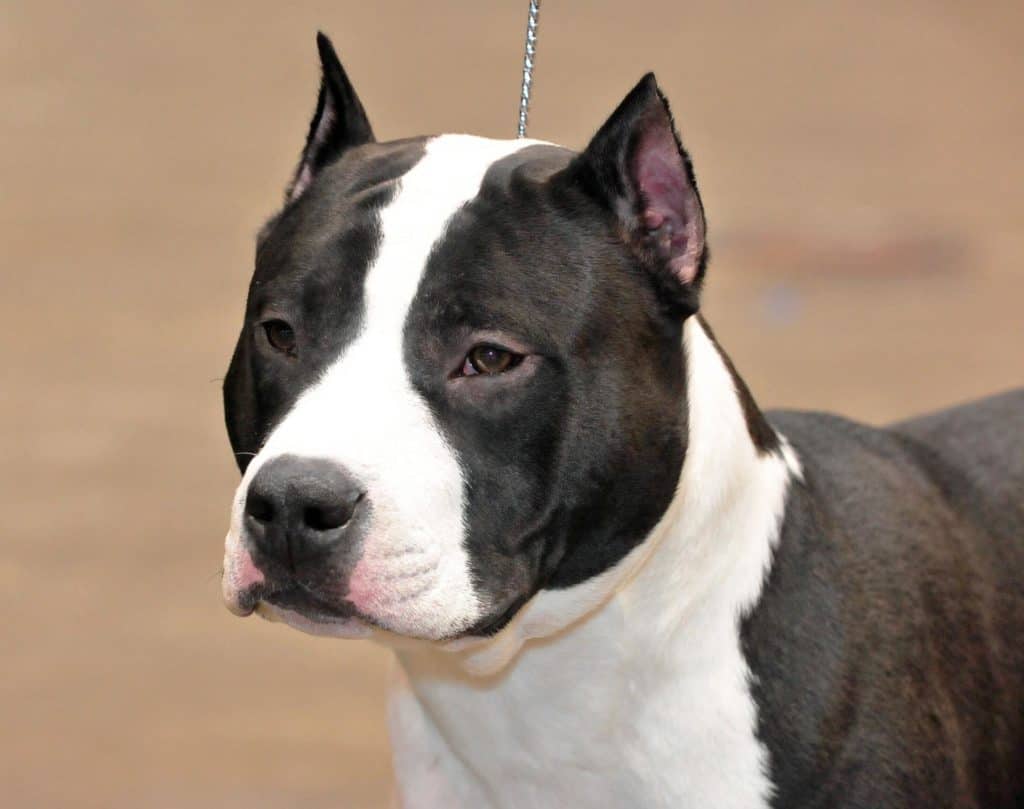
An American Staffordshire Terrier is a breed frequently mixed with a pit
bull terrier
to make a larger dog.
©State Farm, CC BY 2.0, via Wikimedia Commons – License
Staffordshire terriers are bulkier pit bulls. They have a very high prey drive and tend to become hyper-focused on small animals, children, and anything running or making high-pitched noises. These dogs should always be very closely supervised around children and small animals. Staffordshire terriers have been nicknamed “nanny dogs” because of their close protective nature and love for children. They can get too excited, like any breed, though. The dogs make excellent family dogs and, due to their size, will ward off any would-be burglars or problem people. They are prone to chasing cats and other small animals, especially if they run, so caution should be used on walks because they can be strong.
The photo featured at the top of this post is © Mike2479/Shutterstock.com
Thank you for reading! Have some feedback for us? Contact the AZ Animals editorial team.






